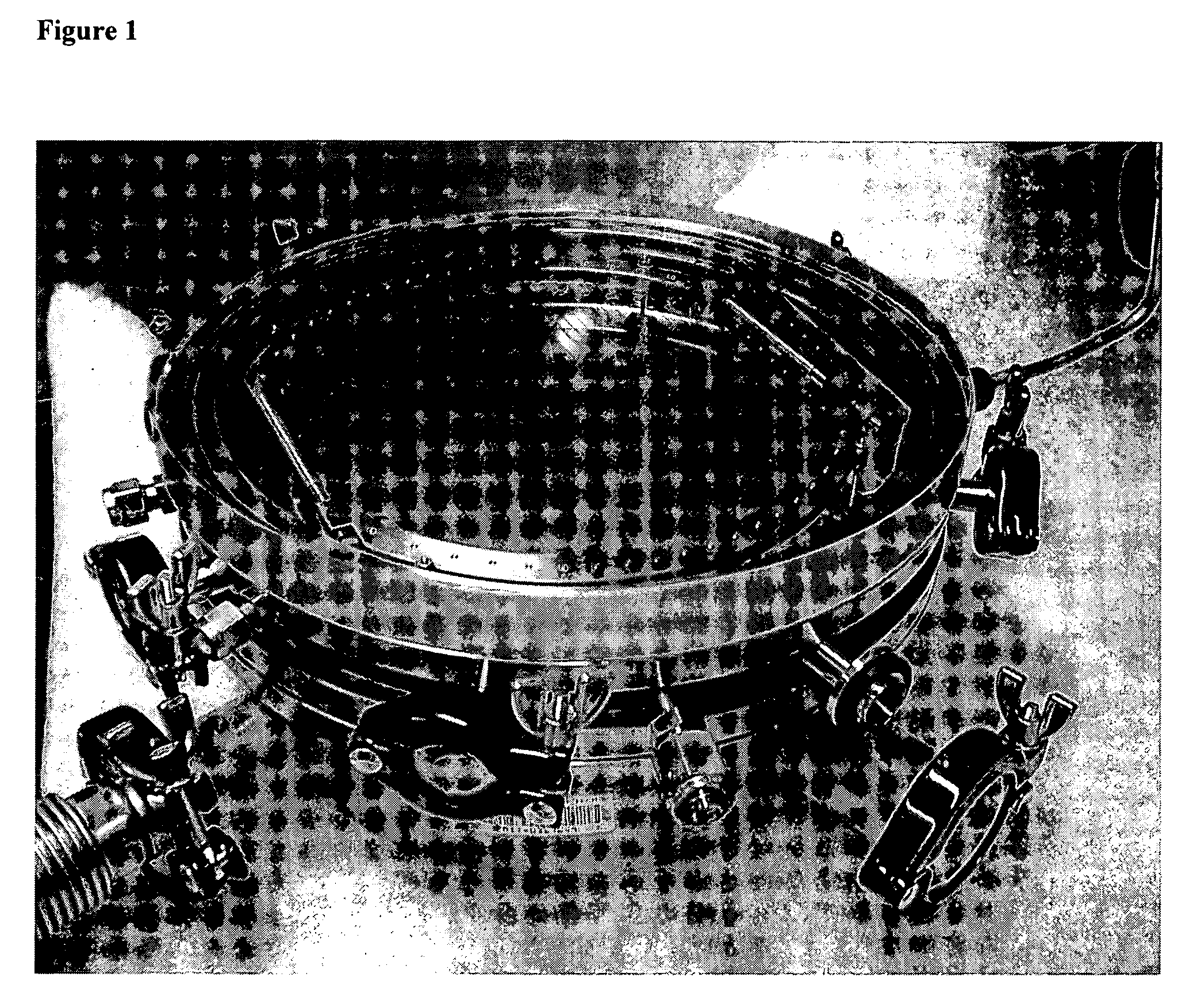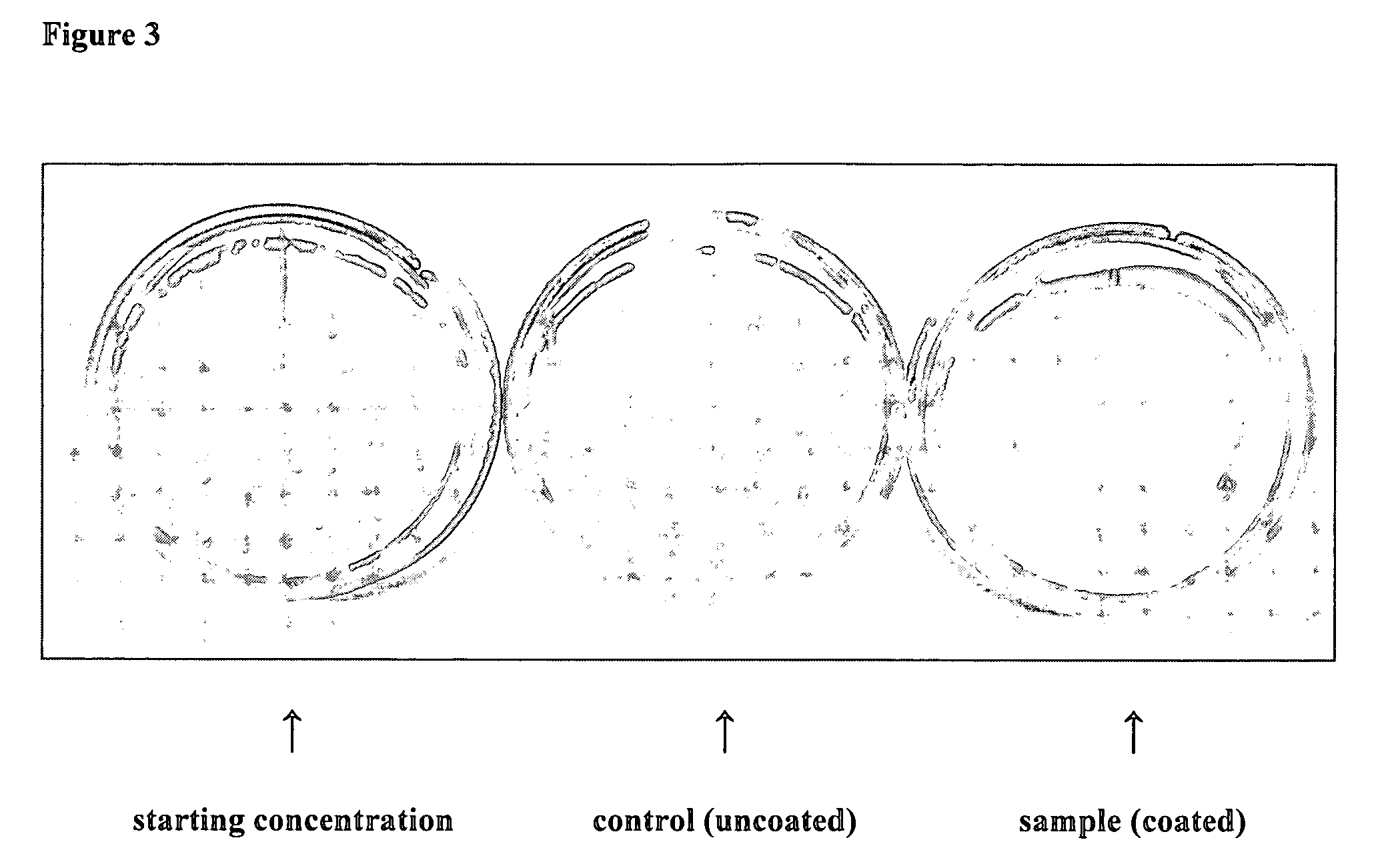Chemical vapor deposition of antimicrobial polymer coatings
a polymer coating and vapor deposition technology, applied in the field of chemical vapor deposition of antimicrobial polymer coatings, can solve the problems of increased cost, limited effectiveness, leaching of antimicrobial agents, etc., and achieve the effects of reducing the incidence of systemic side effects, and significant hydrophobic character
- Summary
- Abstract
- Description
- Claims
- Application Information
AI Technical Summary
Benefits of technology
Problems solved by technology
Method used
Image
Examples
example 1
Polymer Deposition and Antimicrobial Testing
[0249] Films were deposited on 100-mm diameter silicon substrates in a custom-built vacuum reactor (Sharon Vacuum). The reactor was cylindrical with a height of 3.3 cm and a radius of 12 cm. The inlet of precursor gases and the exhaust were at opposite ends of the reactor. The top of the reactor was covered by a quartz plate (about 15 cm radius and about 2.5 cm thick), allowing visual inspection and laser interferometry. The reactor was equipped with a hot-filament array, which provided thermal energy for excitation of molecules. The array consisted of filaments spaced 15 mm apart. The clearance between the filaments and the stage was 23 mm. The substrate, either fabric or a 100 mm diameter silicon wafer, was placed on a backside-cooled stage (43° C.). The tungsten filaments (AWG 26, Omega Engineering) were resistively heated by applying a DC or AC voltage to 330° C., as measured by a thermocouple (Type K, AWG 36, Omega Engineering) direc...
example 2
Polymer Deposition Results
[0252] Depositions of poly(dimethylaminomethylstyrene) (PDMAMS) were carried out to optimize the growth rate and chemical structure of the polymer prior to depositions on fabric and antimicrobial testing. The filament temperature and the substrate temperature were both optimized at a reactor pressure of 200 mTorr, DMAMS flow rate of 2.4 sccm, t-amylperoxide flow of 0.4 sccm and a polished silicon wafer substrate. It is noted that the commercially available DMAMS monomer is a 50 / 50 mixture of the ortho and para isomers. As can be seen from the chart, the optimal conditions to maximize growth were at a filament temperature of 604 K and a substrate temperature of 320 K, which resulted in a growth rate of 106 Angstroms / min. Higher filament temperatures did not result in a further increase in deposition rate (data not shown). Increasing the pressure or decreasing the substrate temperature resulted in monomer condensation to form liquid on the substrate and ther...
example 3
Grafting Results
[0257] As mentioned above, for some applications it may be advantageous to enhance the bonding of the antimicrobial coating to its substrate. To this end, a covalent polymer grafting scheme was devised. A type II photo initiator is used in conjunction with a UV source to enact grafting of the polymer to a surface. A type II photoinitiator is a photosensitive molecule that, when excited, abstracts a hydrogen from the substrate surface. This results in a radical on the surface which can initiate polymerization. The process is described in general in the detailed description. The specific conditions used for successful grafting of PDEAEA used in this work are described here. Nylon was spin cast onto a silicon wafer and the thickness was determined by variable angle spectroscopic ellipsometry and the FTIR spectrum of this layer was taken. Benzophenone (BP) was flowed into the reactor at 0.5 sccm and allowed to saturate the nylon film at approximately 250 mTorr. After so...
PUM
| Property | Measurement | Unit |
|---|---|---|
| Fraction | aaaaa | aaaaa |
| Fraction | aaaaa | aaaaa |
| Fraction | aaaaa | aaaaa |
Abstract
Description
Claims
Application Information
 Login to View More
Login to View More - R&D
- Intellectual Property
- Life Sciences
- Materials
- Tech Scout
- Unparalleled Data Quality
- Higher Quality Content
- 60% Fewer Hallucinations
Browse by: Latest US Patents, China's latest patents, Technical Efficacy Thesaurus, Application Domain, Technology Topic, Popular Technical Reports.
© 2025 PatSnap. All rights reserved.Legal|Privacy policy|Modern Slavery Act Transparency Statement|Sitemap|About US| Contact US: help@patsnap.com



